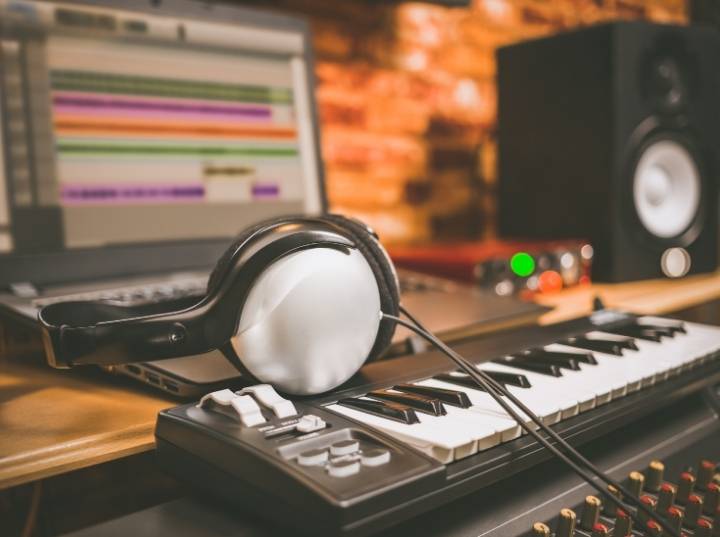
Are you wondering about “what equipment I would need to set up a decent home recording studio?”
This 7 must-have equipment list for beginners will set up a decent home-recording-studio-like professional without breaking the bank.
Do you have a lot of recording tasks to do? Such as vocal recording, instrument recording, mixing, and mastering. Will these 7 equipment be enough?
The answer is WHY NOT, …and let’s get started!
#1. Computer
I’m sure you have got at least a computer already, but the questions are “Is that computer enough for a home recording studio?” And, “What is the best computer for a home recording studio?”
You can get stuck in the thousand debates between Laptop vs. Desktop or Windows vs. Mac OS vs. Linux in many forums. You can read and participate for fun but don’t waste time there because of one true obvious fact:
The BEST computer for the recording studio is a POWERFUL computer and you feel comfortable working with it, no matter it is laptop vs desktop, and no matter it runs on Windows vs. Mac vs. Linux.
That’s the least so that your computer can help you run DAW – Digital Audio Workstation and plugin software smoothly, and reduce latency (time delay) during recording or mixing.
Note: the “latency” also depends on the quality of other equipment such as the audio interface.
#2. DAW (Digital Audio Workstation) Software
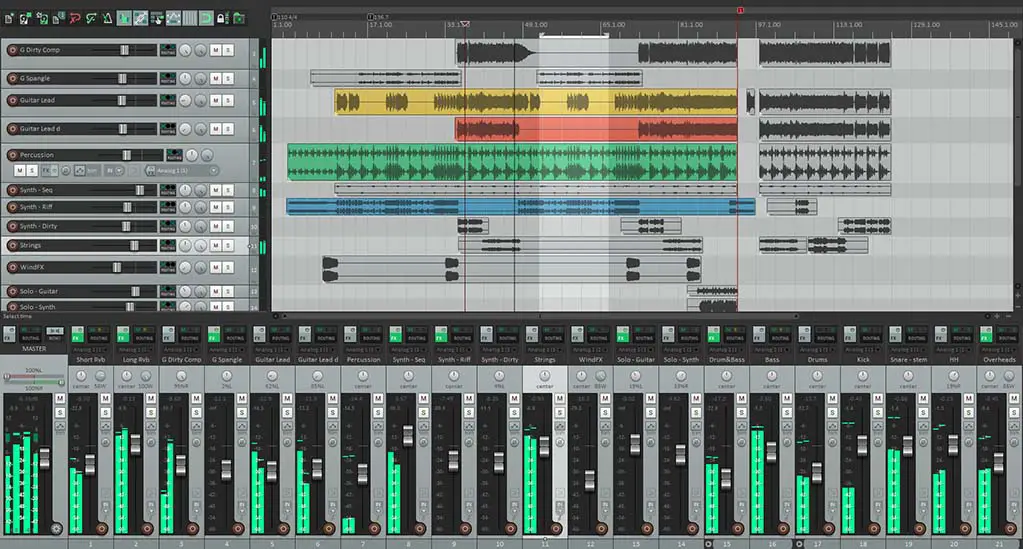
There are many options for you, from free to paid DAWs software. I recommend you choose advanced DAWs if you want to go pro.
Here are some points you should consider when choosing a DAW software:
- Some DAWs is best suited for recording, other is best for bit maker. You have to ask yourself what you need. Find out more about which DAW is best suited to you at here.
- You should choose popular DAWs because they have a large community ready to help you.
Below are two versatile and powerful DAWs for home recording studio:
The Cubase by Steinberg is one of the outstanding candidates. Easy-to-use, very popular, having many free plugins (VSTi) and running on both Windows and Mac OS, are what I like about Cubase.
If you’re looking for a powerful DAW with light and reasonable price, the REAPER is a great choice. Like Cubase, the REAPER also works on both Windows and Mac OS.
#3. Audio Interface (Sound Card)
What is Audio Interface? Short Explanation, the studio microphone, studio headphone, studio monitors, and other equipment connected to a computer via an audio interface.
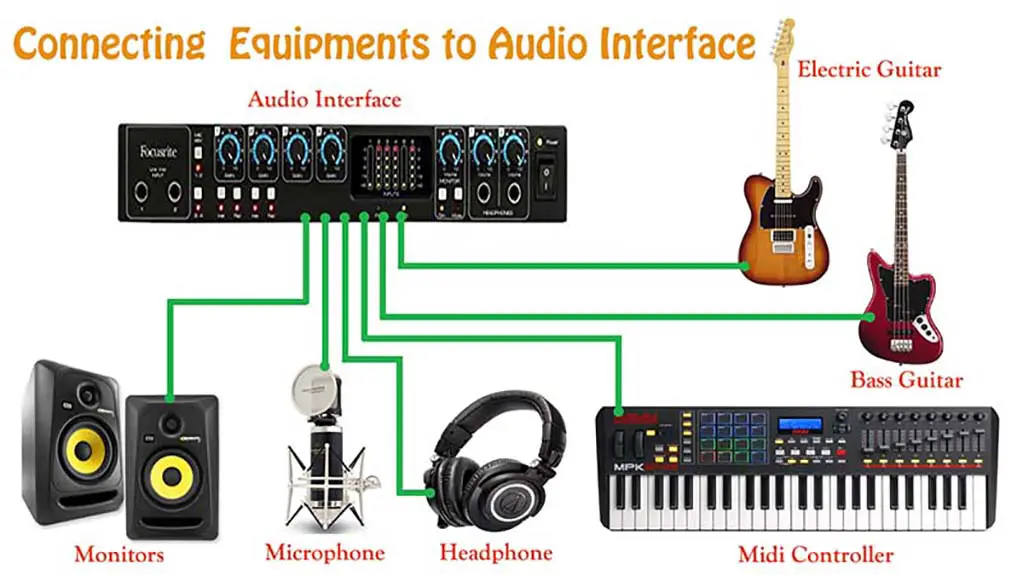 In order to choose the best-suited audio interface, you need to clear these questions:
In order to choose the best-suited audio interface, you need to clear these questions:
- How many studio microphones do you need for recording at the same time?
- How many studio headphones do you need for connecting to the audio interface?
- Do you need to connect electric guitars to an audio interface?
- Do you need to connect the MIDI controller to the audio interface?
- Does the audio interface have phantom 48 volts for the condenser microphone?
If you need a small home recording studio for your individual needs, I highly recommend you buy one with features:
- Mic preamp: 2 ports
- Hi- Z instrument: 1 ports
- Headphone: 1 port
- MIDI in/out: yes
- Phantom 48 volts: yes – for condenser microphones
…or read the details guide to choosing the best audio interfaces here!
#4. Studio Microphone
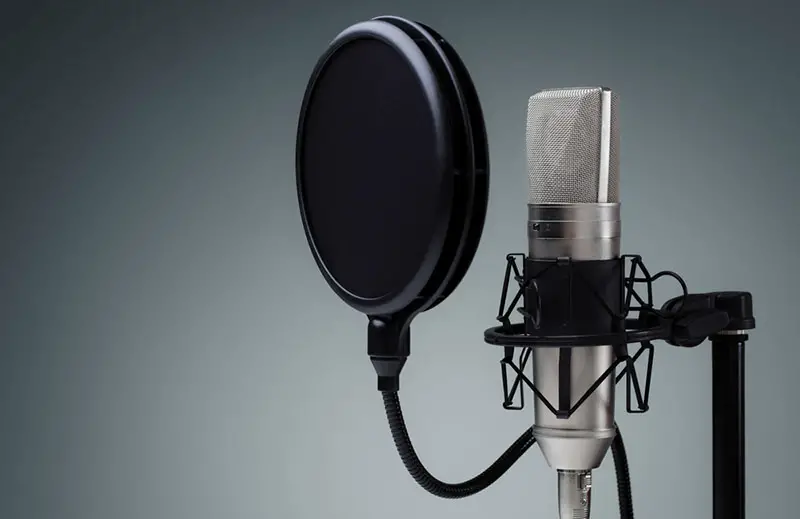
Obviously, you should invest in good quality studio microphones if you don’t want to get poor audio quality in recording.
There are three types of studio microphones:
1. Dynamic microphones:
Dynamic microphones have reasonable prices and used for multi-purpose, including recording vocals and instruments.
They are less sensitive than condenser mics, as a result, they reduce background-noise better.
2. Condenser microphones:
Condenser microphones are very popular in recording studios. It’s a good idea for recording vocals and instrument tasks.
They are highly sensitive but they need phantom 48 volts. The quality sound is better than dynamic mics, however, they are a little bit affected by temperature & humidity.
3. Ribbon microphone:
The ribbon microphone is expensive and the BEST for recording instruments such as acoustic guitars and drums.
So which one is BEST if your budget only permits you to buy one studio microphone?
I recommend you invest in a good quality dynamic microphone because it is durable, versatile, and able to reduce background-noise while recording.
Note: don’t forget to buy a pop filter – a must-have for vocal recording, it reduces ‘popping’ sounds like /p/, /s/, etc.
#5. Studio Headphones
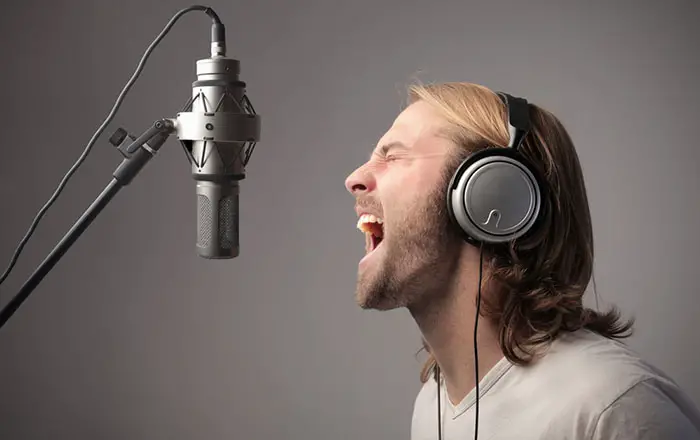
You will need studio headphones for recording vocals, tracking, and mixing.
There are two main types of studio headphones, closed-back headphones, and open-back headphones.
- Close-back headphones are BEST for vocal recording and tracking because they are designed to isolate you from the outside sounds.
- Open-back headphones are suitable for mixing. They give a more “open” sounding than closed-back headphones, which helps you feel realistic during mixing.
If you need a studio headphone used for both recording and mixing, the closed-back headphone is more suited.
#6. Studio Monitor
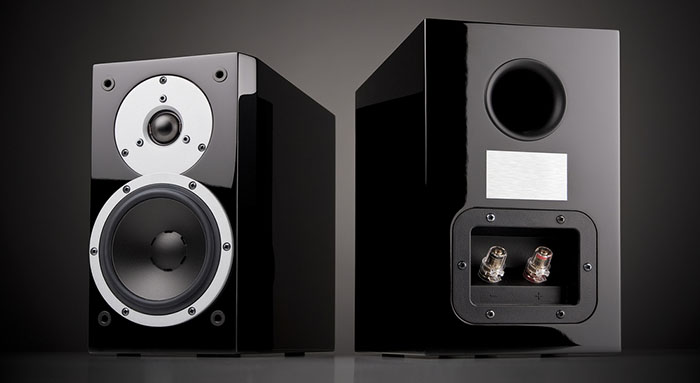
The studio monitors are the speakers but nothing like a normal speaker you usually see. Because those speakers are designed for music listeners and studio monitors are designed for music producers.
- The normal speakers emit pleasing sounds (distortion sounds) for your pleased ears such as adding more bass or treble.
- The studio monitors emit the sounds as clean and accurate as possible.
Note:
The studio monitors are essential. They help you produce balanced soundtracks. It means your products will perform well in different speaker systems.
If your soundtrack is heavy bass, for example, when it is played on adding-bass-speakers, as a result, the sounds are buzzing because of very heavy bass.
There are so many types of studio monitors, which one is best suited for your small home recording studio and your money?
If you have one choice, I recommend you buy nearfield studio monitors. Why? Click here to read a definite guide about choosing the BEST studio monitors.
#7. Midi Controller (option)
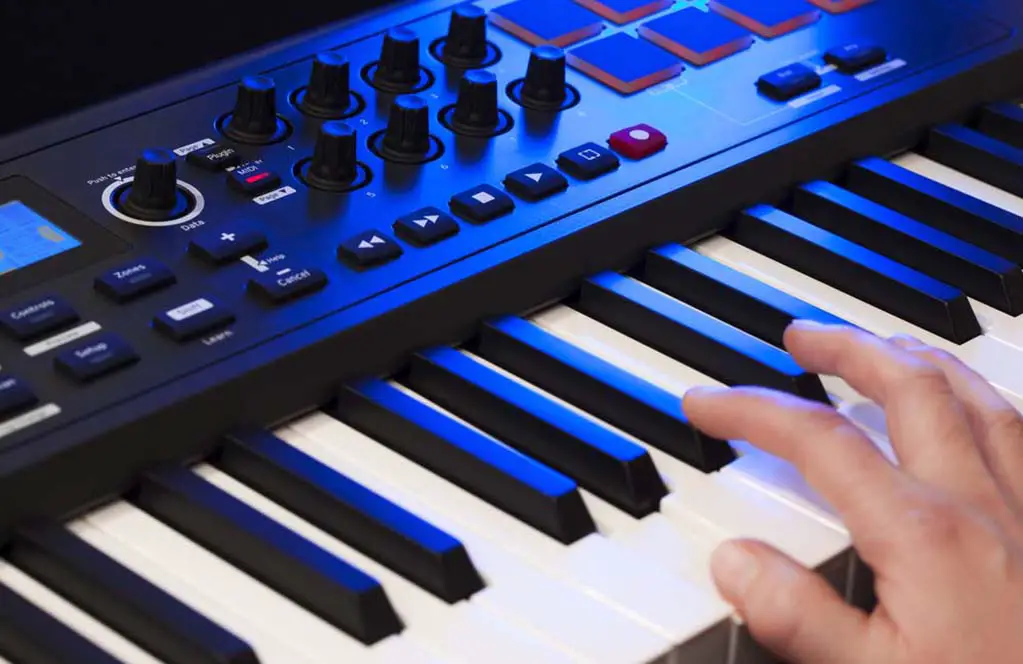
You may want to buy a midi controller if you play keyboard or you want to become a bit maker and so on.
Two basic things you need to consider when buying a midi controller, number of keyboards and keyboard action.
- The number of keyboards depends on your music style, if you work with blue, jazz, pop, you need at least 61 keys, and if you work with electronic music like EDM, dance, hip hop, rap, the 49 keys are BEST or even 25 keys are ok.
- Keyboard action is the weight when you press down keyboards.
There are three levels of weight:
- Weighted Hammer requires more force than semi-weighted, it is suitable for ones who play the piano.
- Semi-Weighted is suitable to ones who play keyboard
- Synth Action is very light and suitable for beginners.
Conclusion
Just with the equipment above, you have a decent and like-a-pro recording studio at home.
Remember, all equipment in your studio are links the chain. They need synchronization in quality. This means, if one of those pieces of equipment is of poor quality, even though the others are high quality, your products will be not good.
For example, if your studio microphone is low quality, although all of the others are high-end, you will only get a poor quality soundtrack. Or microphone is good but the audio interface is bad, you will get the same result.
The last words
Setting up a home recording studio is not difficult or rocket science. The key is to choose the right equipment with quality in synchronization.
If you like this article, please share and comment. Thanks for stopping by.
